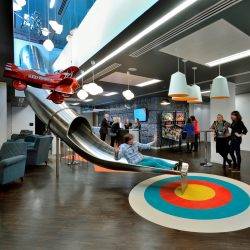January 7, 2019
What Leonardo da Vinci can teach us about the six hour working day 0
 The latest idea to grip the sometimes limited imagination of the world’s workplace chatterers is that of the six hour working day or the four day working week. This has its original roots in a Swedish experiment designed to limit the hours people work in an attempt to improve their work-life balance and possibly even increase their productivity. Now a growing number of firms are looking to introduce a nominal four day working week or restrict the use of emails outside of office hours. These are always commendable goals and you can see the logic. We know people find it increasingly hard to switch off, we know that this is bad for them and we know that long hours don’t necessarily equate to greater productivity.
The latest idea to grip the sometimes limited imagination of the world’s workplace chatterers is that of the six hour working day or the four day working week. This has its original roots in a Swedish experiment designed to limit the hours people work in an attempt to improve their work-life balance and possibly even increase their productivity. Now a growing number of firms are looking to introduce a nominal four day working week or restrict the use of emails outside of office hours. These are always commendable goals and you can see the logic. We know people find it increasingly hard to switch off, we know that this is bad for them and we know that long hours don’t necessarily equate to greater productivity.



































January 8, 2019
From nudge tech to listening tools, Gartner makes some workplace predictions for 2019
by Brian Kropp • Automation, Comment, Technology, Workplace
Last year we saw businesses reporting their gender pay gap, General Data Protection Regulation (GDPR) taking effect, speculation on how Brexit will impact jobs and further impact on how technology is changing the way we work. Looking forward to the year ahead, Gartner has pulled together a fresh set of workplace predictions for the coming year. This includes the demise of employee surveys as the adoption of sophisticated listening tools accelerates; precious little progress in closing the gender pay gap, but the evolution of discrepancies in pay scales between new hires and existing employees; the rise and rise of the #MeToo movement, which could lead to more senior executives being ousted in 2019 than in 2018; and new technologies designed to nudge workers into action.
More →